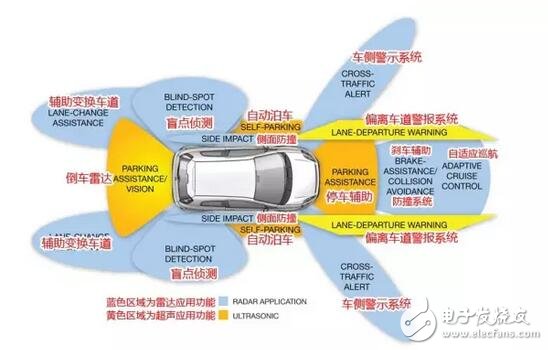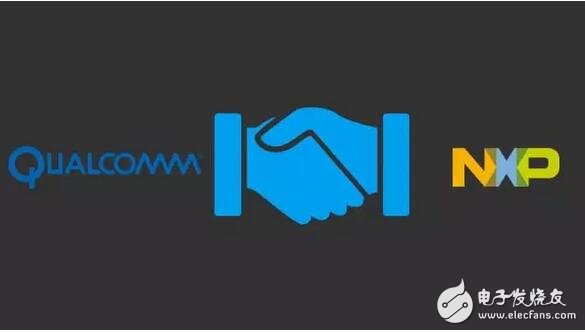In the current field of electronic information, the rhythm of cross-border integration is getting faster and faster, and the convergence of all links in the industry chain is unprecedented. Therefore, looking at a field or a project now requires comprehensive consideration from all aspects of the entire industry chain, including the cloud. The management, including hardware, software, algorithms, and data, and each enterprise in each industry chain, can do forward or backward integration at any time, and the competition and cooperation relationship can be changed at any time.
With the advent of the new hardware era, the research on the industry has put forward higher requirements. The latitude of thinking needs to be wider. It is necessary to clarify the intricate relationships and future development trends, and the workload is several times higher than before. The study of benchmarking companies in all aspects of the industry chain is an essential lesson. Only by understanding the strategies and trends of these big companies can we discover the possible entrepreneurial/investment opportunities. So recently, I have consciously done some research on large enterprises, such as the audio, visual, IOT platform, etc., as well as the chip manufacturers mainly targeting ADAS in this article, to understand the main product lines and status of each family.
ADAS (Advanced Driver Assistance System) refers to the use of various Sensors installed in the vehicle to collect environmental data in the vehicle at the first time, and to perform technical processing such as identification and detection of static and dynamic objects. , so that the driver can detect the dangers that may occur in the fastest time. Usually includes navigation and real-time traffic system TMC, electronic police system ISA, adaptive cruise ACC, lane offset warning system LDWS, lane keeping system, collision avoidance or pre-crash system, night vision system, adaptive lighting control, pedestrian protection system, Automatic parking system, traffic sign recognition, blind spot detection, driver fatigue detection, downhill control system and electric vehicle alarm system.
At present, most of the innovation of automobiles comes from the innovation of automotive electronics. From the perspective of automotive electronic systems, it is gradually evolved from a decentralized architecture (many ECU control) to a centralized or even central control system (super processor). This trend is the same as the implementation of ADAS. Changes in this trend include reducing ECUs, reducing power consumption, increasing processor and memory utilization efficiency, reducing software development difficulty and improving security, and making automotive semiconductor manufacturers play an increasingly important role in the entire automotive industry.
At the same time, for the ADAS processor chip, it now presents a similar product form, such as a smart home, a single product explosion, and a combination of multiple functions, that is, similar to Mobileye's visual processing ADAS chip single product, and multi-sensor fusion, The trend of making ADAS processing chips a platform. At present, these two forms have a market, single function will make ADAS in the middle and low-end car or even after the market, a wider range of popularity, of course, the price is the premise. The fusion of multiple sensors will increase the level of autopilot to Level4 or Level5. At present, unmanned vehicles such as Google and Baidu are doing multi-sensor fusion, but there is no specific Level4/5ADAS ASIC chip.

From the chip design point of view, the main challenges of the ADAS processor chip are as follows:
1, the standard of the car standard, preferably through ISO26262, to achieve ASIL-B or even ASIL-D level.
2, high computing and high bandwidth, especially multi-sensor fusion chips, need higher chip frequency, and heterogeneous design, in order to achieve fast data processing speed, while the transmission throughput rate is also higher.
3. With the application of artificial intelligence in ADAS, the design of the chip will consider increasing the deep learning design of hardware, how to make trade-offs between hardware and software, and the artificial intelligence computing model and the original software and hardware architecture and the whole system design. Matching is still in the early stages of exploration.
The following mainly introduces the products of various major ADAS processor chip manufacturers, and hopes to get a glimpse of the current status of the ADAS processor chip field and the future development trend from their products.
Qualcomm / NXP
Since Qualcomm has acquired NXP, it is introduced here. Qualcomm itself began to gradually enter ADAS through its own mobile processor chip (changed into a car-level). Of course, it has just started to look around. Recently, it has cooperated with the company to launch the first platform based on the Snapdragon 820A at CES. Learning the latest ADAS product prototype, the product runs the 820A Neural Network Processing Engine (SNPE), which can realize multi-class object recognition for vehicles, pedestrians, bicycles, etc., as well as real-time semantic segmentation of pixel-level travelable areas. There is still a certain distance. In general, Qualcomm's product strategy should be based on in-vehicle entertainment information systems, and gradually expand to more professional ADAS.

At the same time, NXP and Freescale, previously acquired by NXP, have a complete product line layout in the automotive electronics and ADAS chips.
NXP has released the Blubox platform to provide OEMs with a solution computing platform for designing, manufacturing and selling Level 4 (SAE) driverless cars. The following figure is a block diagram of NXP's ADAS system, which combines the data of multi-channel video and 77G radar and transmits it to the cloud and body system. We see that NXP is a company that can provide a full set of Reference solutions. The product line in this piece is very comprehensive. Although there is no more chip integration, it provides relatively scattered chips and solutions. Here we focus on the central processor S32V234 and MPC5775K, MPC5775K is to process the radar data, and S32V234 is the fusion analysis of the data processed by the multi-sensor, through the CAN bus, the results are transmitted to the body system.
The S32V234 is an ADAS processor introduced in NXP's S32V series in 2015. It supports heterogeneous computing of CPU (4 ARM V8 architecture A53 and M4), GPU (GC3000) and image recognition processing (CogniVue APEX2 processors), low 5W. Power design. The CogniVue APEX2 processor can simultaneously support four-way car cameras (front, back, left, and right), extract images and classify them, and the GPU can perform real-time 3D modeling with a calculated amount of 50GFLOPs. Therefore, according to this hardware architecture, 360-degree viewing can be completed, and functions such as automatic parking can be completed. At the same time, the chip reserves the interface supporting millimeter wave radar, laser radar and ultrasonic, which is convenient for multi-sensor fusion. The chip supports ISO 26262 ASIL B standard.
The QorivvaMPC567xK series is based on Power Architecture® 32-bit MCUs. The MPC577XK is a dedicated radar information processing chip that adds memory to the chip, improves speed and performance, and supports adaptive cruise control, smart headlight control, and lane departure warning. And blind spot detection applications. From the perspective of the entire radar system, combined with 77G radar transceiver chipset, Qorivva MPC567xK MCU, FPGA, ADC, DAC, SRAM, support long, medium and short range applications. The key areas of interest here are the Signal Processing Toolbox design, which includes FFT, DMA, COPY, and Scheduler. At present, the 77 GHz FCMW radar needs to use FFT in the digital signal processing, that is, fast Fourier transform. The sampling point of the general vehicle radar is about 512-2048. From the chip architecture diagram, we can see the special FFT circuit.
In addition to the S32V series, Freescale has acquired a well-known i.MX series chip that can also be used as a central processing unit. i.MX, especially i.MX6, has a large number of applications on the car, especially on the car information system. Many car manufacturers use i.MX.
Air Filter,Engine Filter Screen,Engine Strainer Mesh,Air Filter Screen Material
Jinan Guohua Green Power Equipment Co.,Ltd. , https://www.guohuagenerator.com
